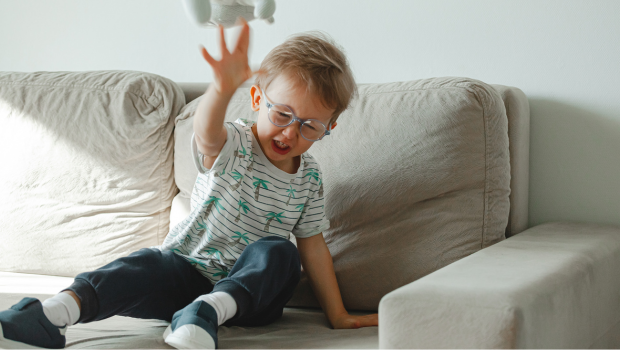
Controlling Kids Tantrums: 6 Easy Methods for Prevention and Management

Controlling kids tantrums is a common challenge faced by parents, but understanding and implementing effective strategies can make a significant difference in managing these emotional outbursts. In this comprehensive guide, we will explore proven methods to prevent and control tantrums, creating a positive and supportive environment for both parents and children.
Understanding the Importance of Controlling Kids Tantrums
Before delving into specific strategies, it’s crucial to recognize that tantrums are a normal part of a child’s development. These emotional outbursts often stem from feelings of stress, emotional insecurity, and fear. Rather than viewing tantrums as negative behavior, acknowledging their normalcy allows parents to take proactive steps to help children overcome these challenging moments.
Building a Positive Emotional Foundation through Bonding Activities
A cornerstone in controlling kids tantrums lies in establishing a positive emotional foundation. Consistent bonding activities between parents and children, such as playing together and storytelling sessions, have been proven to leave a lasting impact on a child’s emotional well-being. Engaging in these activities reinforces discipline and patience, contributing to a reduction in emotional meltdowns among toddlers and preschool kids.
Avoiding Negative Reactions: Maintaining Composure in Challenging Situations
Controlling kids tantrums requires parents to avoid being triggered by their child’s behavior, no matter how stressful or embarrassing the situation may be. Reacting negatively to a tantrum can exacerbate the problem. Drawing a parallel to the advice given to couples about maintaining composure when feeling angry, the same principle applies to interactions with children. By staying composed, parents can create a calmer environment and set an example for emotional regulation.
Be able to understand where he is coming from
Tantrums often have underlying triggers, and understanding these triggers is essential for effective control. For children over three years old, communication becomes a powerful tool. Engaging in conversations about what they want, how they feel, and what makes them sad can provide valuable insights. For toddlers with limited vocabulary, encouraging expression through actions and signs becomes crucial. This proactive approach enables parents to decode their child’s needs and emotions, addressing the root cause of tantrums
Give him the space to vent out.
Attempting to stop a child from expressing negative emotions can have adverse effects on their mental health. Children, especially toddlers, have limited capacities for managing their feelings. Allowing them a brief period, typically two to three minutes, to vent out their stress, worry, and sadness can be a constructive way to release pent-up emotions. This method respects the child’s need for emotional expression while providing a controlled environment for them to do so.
Be creative – offer other objects of interest.

If a child’s tantrum persists beyond the venting time, creative distraction becomes a valuable strategy. Redirecting their attention to other objects of interest in the environment can stimulate their curiosity and shift their focus. For instance, if a child is upset about not getting ice cream, pointing to a stack of blocks or cute dolls can capture their attention. Utilizing the surroundings to engage a child’s interest offers an effective means of steering away from the cause of distress.
Offer the physical comfort of your mommy or daddy embrace.
Physical comfort, in the form of cuddles and hugs, is a powerful tool for controlling tantrums. Children, especially at a young age, understand love through physical means. Embracing them during moments of distress stimulates the release of oxytocin, commonly known as the love hormone. This hormone promotes feelings of happiness and security, providing children with a sense of comfort and reducing stress.
Holistic Approach to Controlling Kids Tantrums
In conclusion, preventing and controlling kids’ tantrums requires a holistic approach that addresses their emotional, communicative, and physical needs. Building a positive emotional foundation through shared activities, staying composed during challenging moments, understanding the triggers behind tantrums, allowing venting time, employing creative distraction techniques, and offering physical comfort are integral components of effective tantrum management.
As parents, embracing these proactive strategies contributes not only to immediate tantrum control but also to the overall emotional well-being of our children. By fostering a supportive and understanding environment, we empower our little ones to navigate their emotions, leading to fewer and less intense tantrums. In the journey of parenthood, these methods serve as valuable tools for creating harmonious relationships with our children and promoting their healthy emotional development.